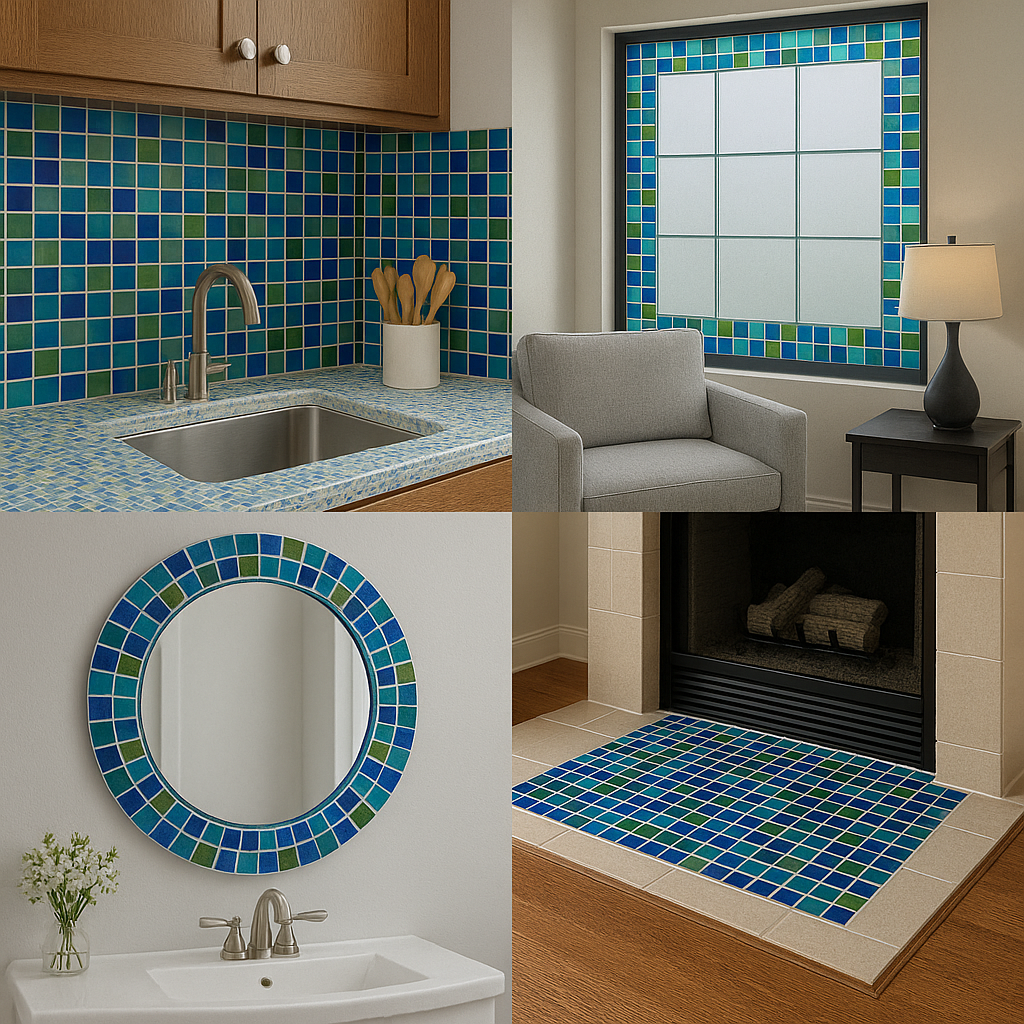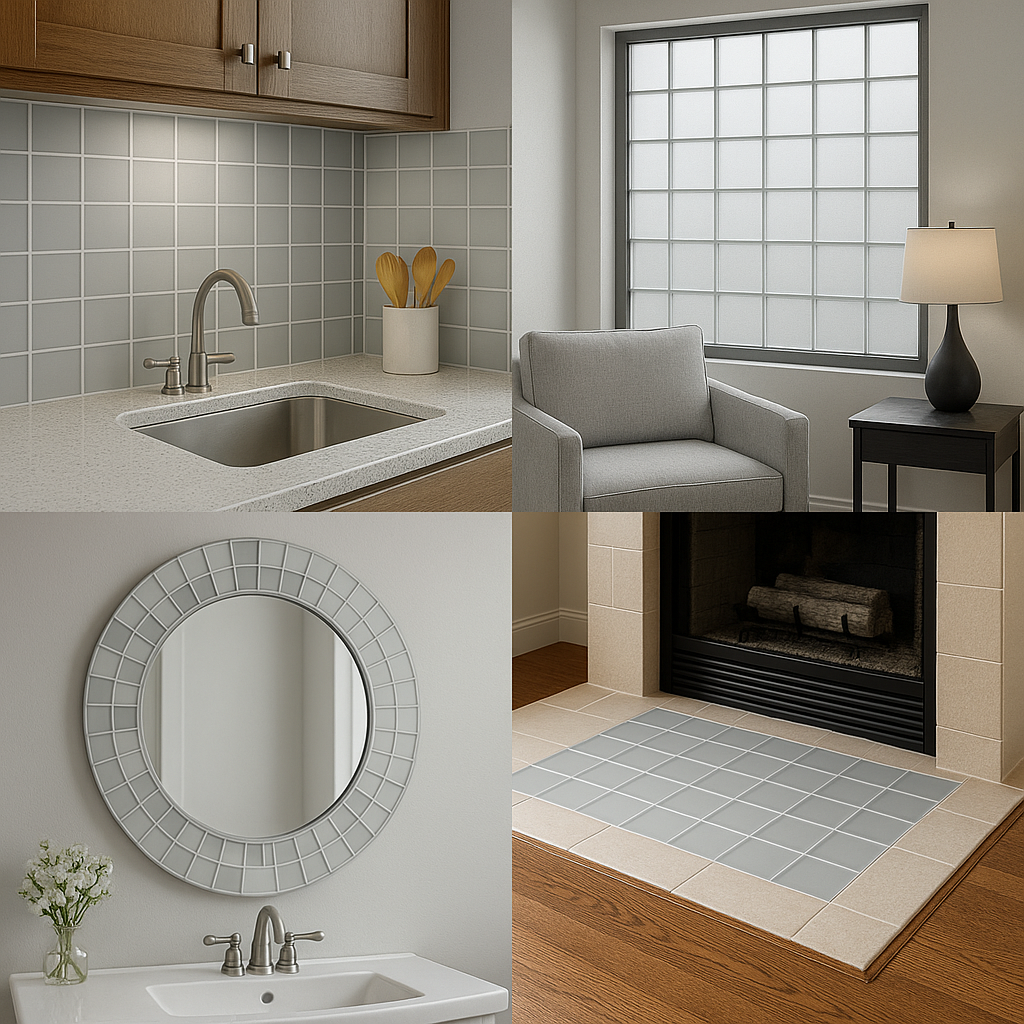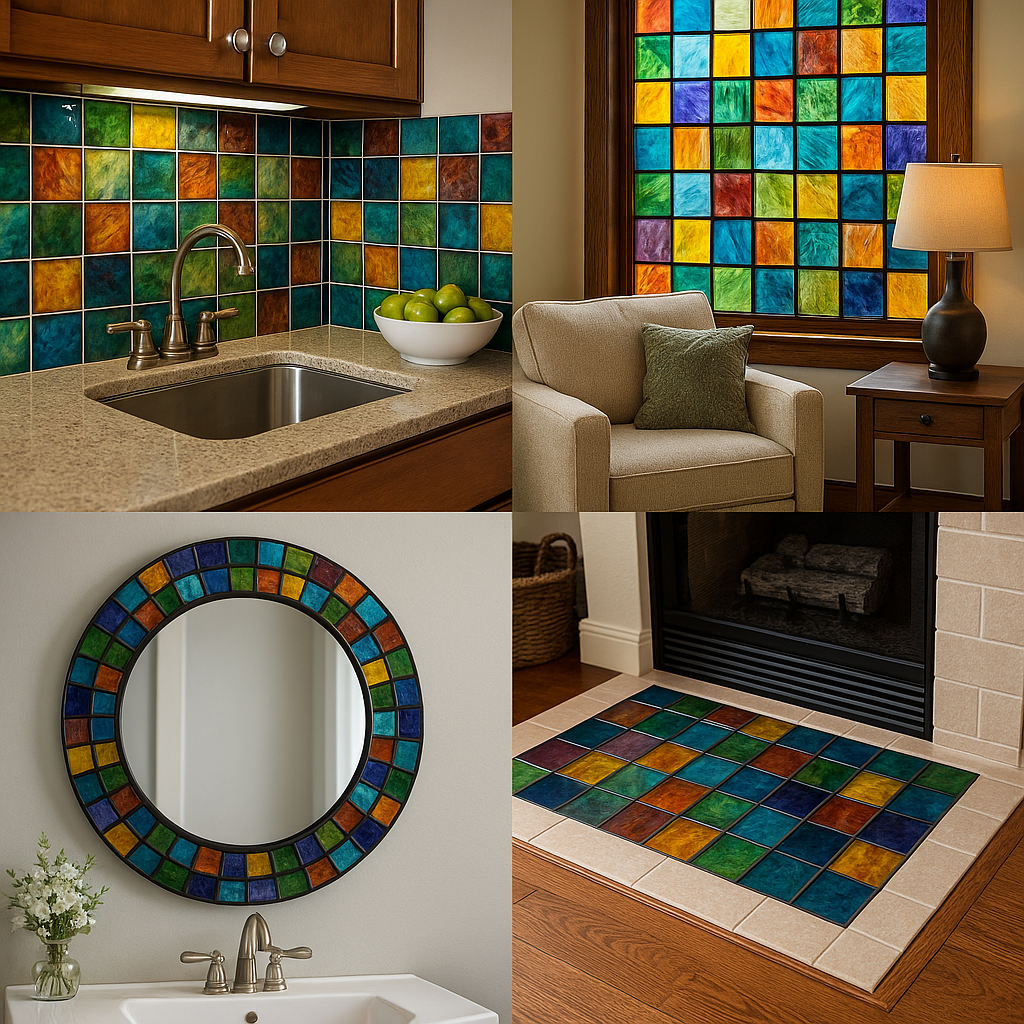Advantages Of Using Mosaic Glass Tiles In Interior Design

Mosaic glass tiles have become a popular choice in interior design due to their versatility, aesthetic appeal, and functional benefits. These tiles, crafted from small pieces of glass arranged in intricate patterns, offer a unique way to enhance the visual and tactile qualities of a space. Their advantages extend beyond mere decoration, making them a practical and stylish option for homeowners and designers alike.
One of the most notable advantages of mosaic glass tiles is their ability to create a striking visual impact. The reflective nature of glass allows these tiles to catch and refract light, adding depth and dimension to any room. This characteristic is particularly beneficial in spaces with limited natural light, as the tiles can brighten the area and create an illusion of openness. Whether used as a backsplash in the kitchen, an accent wall in the bathroom, or even as flooring in select areas, mosaic glass tiles can transform ordinary surfaces into captivating focal points.
In addition to their aesthetic appeal, mosaic glass tiles are highly versatile. They come in a wide range of colors, shapes, and finishes, allowing designers to customize their use to suit various styles and preferences. From sleek, modern designs to more traditional or eclectic patterns, these tiles can complement virtually any interior theme. Their adaptability also extends to their application; they can be used on walls, floors, countertops, and even ceilings, providing endless possibilities for creative expression.
Durability is another key advantage of mosaic glass tiles. Despite their delicate appearance, these tiles are surprisingly robust and resistant to wear and tear. Glass is non-porous, which means it does not absorb moisture, making mosaic tiles an excellent choice for areas prone to humidity, such as bathrooms and kitchens. This resistance to water also makes them easy to clean and maintain, as spills and stains can be wiped away effortlessly without leaving permanent marks. Furthermore, their non-porous nature helps prevent the growth of mold and mildew, contributing to a healthier indoor environment.
The eco-friendly aspect of mosaic glass tiles is worth noting as well. Many manufacturers produce these tiles using recycled glass, which reduces waste and minimizes the environmental impact of their production. Choosing mosaic glass tiles made from recycled materials allows homeowners to incorporate sustainable practices into their interior design projects without compromising on style or quality. This makes them an appealing option for those who prioritize environmental responsibility.
Another advantage of mosaic glass tiles is their ability to enhance the perception of space. Their small size and intricate patterns can make a room feel larger and more dynamic, especially when paired with strategic lighting. This is particularly useful in compact areas where maximizing the sense of space is essential. Additionally, the variety of textures and finishes available—such as glossy, frosted, or iridescent—can add layers of interest to a design, creating a multidimensional effect that draws the eye.
In conclusion, mosaic glass tiles offer a combination of beauty, functionality, and sustainability that makes them an excellent choice for interior design. Their ability to elevate the aesthetic appeal of a space while providing practical benefits such as durability, ease of maintenance, and environmental friendliness ensures their continued popularity among designers and homeowners. By incorporating these tiles into a design scheme, one can achieve a harmonious balance between form and function, resulting in interiors that are both visually stunning and highly practical.
Exploring Frosted Glass Tiles For A Modern Aesthetic

Frosted glass tiles have emerged as a popular choice for homeowners and designers seeking a modern aesthetic that combines elegance with functionality. These tiles, characterized by their translucent and matte finish, offer a unique visual appeal that sets them apart from other types of glass tiles. Their ability to diffuse light while maintaining a sense of privacy makes them particularly versatile, allowing them to be used in a variety of spaces, from bathrooms and kitchens to living areas and commercial settings. As design trends continue to favor clean lines and minimalist approaches, frosted glass tiles have become a staple in contemporary interiors.
One of the defining features of frosted glass tiles is their ability to soften light. Unlike clear glass tiles, which allow light to pass through unobstructed, frosted glass tiles scatter light, creating a gentle glow that enhances the ambiance of a room. This quality makes them ideal for spaces where natural or artificial light plays a significant role in the overall design. For instance, when used as a backsplash in a kitchen, frosted glass tiles can reflect under-cabinet lighting in a way that adds depth and warmth to the space. Similarly, in bathrooms, they can be used to create a serene and spa-like atmosphere by diffusing light from overhead fixtures or windows.
In addition to their aesthetic appeal, frosted glass tiles offer practical benefits that make them a desirable choice for modern interiors. Their matte finish helps to conceal fingerprints, smudges, and water spots, which are often more noticeable on clear or glossy glass surfaces. This makes them particularly suitable for high-traffic areas or spaces prone to moisture, such as shower walls or countertops. Furthermore, frosted glass tiles are easy to clean and maintain, requiring only a simple wipe-down with a damp cloth to keep them looking pristine. Their durability and resistance to stains also contribute to their long-lasting appeal, ensuring that they remain a worthwhile investment for years to come.
The versatility of frosted glass tiles extends beyond their functional attributes, as they can be incorporated into a wide range of design styles. Their neutral and understated appearance allows them to complement both bold and subtle color palettes, making them a fitting choice for modern, industrial, or even transitional interiors. For those seeking to create visual interest, frosted glass tiles can be paired with other materials, such as natural stone, metal, or ceramic, to achieve a layered and textured look. Additionally, they are available in various shapes, sizes, and patterns, providing endless possibilities for customization. Whether arranged in a classic subway tile layout or a more intricate mosaic design, frosted glass tiles can elevate the aesthetic of any space.
As sustainability becomes an increasingly important consideration in design, frosted glass tiles also stand out for their eco-friendly properties. Many manufacturers produce these tiles using recycled glass, reducing waste and minimizing their environmental impact. This makes them an excellent choice for environmentally conscious homeowners and designers who wish to incorporate sustainable materials into their projects without compromising on style or quality.
In conclusion, frosted glass tiles offer a harmonious blend of beauty, functionality, and versatility, making them a compelling option for those seeking a modern aesthetic. Their ability to diffuse light, resist wear and tear, and adapt to various design styles ensures that they remain a timeless choice for contemporary interiors. Whether used as a focal point or a subtle accent, frosted glass tiles have the power to transform spaces into sophisticated and inviting environments.
The Versatility Of Stained Glass Tiles In Home Decor

Stained glass tiles have long been admired for their ability to transform ordinary spaces into vibrant, artistic environments. Their versatility in home decor is unmatched, offering homeowners and designers a unique way to infuse color, texture, and personality into various areas of a home. These tiles, crafted from colored or textured glass, are available in a wide range of styles, patterns, and finishes, making them suitable for both traditional and contemporary interiors. Whether used as a focal point or as subtle accents, stained glass tiles can elevate the aesthetic appeal of any room while providing functional benefits.
One of the most compelling aspects of stained glass tiles is their ability to interact with light. When natural or artificial light passes through these tiles, it creates a dynamic interplay of colors and reflections that can dramatically enhance the ambiance of a space. This characteristic makes stained glass tiles particularly popular in areas such as kitchens and bathrooms, where light is often abundant. For instance, a backsplash made of stained glass tiles can serve as a striking centerpiece, catching the eye and adding depth to the overall design. Similarly, incorporating these tiles into shower walls or bathroom mirrors can create a luxurious, spa-like atmosphere that feels both serene and sophisticated.
In addition to their aesthetic appeal, stained glass tiles are highly versatile in terms of application. They can be used to create intricate mosaics, bold geometric patterns, or even simple arrangements that highlight their natural beauty. This flexibility allows homeowners to customize their designs to suit their personal tastes and the specific needs of their space. For example, a living room wall adorned with a stained glass tile mural can become a conversation piece, while smaller accents, such as border tiles or decorative inserts, can subtly enhance the charm of a room without overwhelming the design. Furthermore, stained glass tiles are not limited to walls; they can also be used on tabletops, furniture, and even ceilings to add a touch of elegance and creativity.
Another advantage of stained glass tiles is their durability and ease of maintenance. Unlike some other decorative materials, glass is resistant to moisture, stains, and fading, making it an ideal choice for high-traffic areas or spaces exposed to humidity. Cleaning stained glass tiles is typically straightforward, requiring only a gentle wipe with a damp cloth to maintain their brilliance. This practicality ensures that homeowners can enjoy the beauty of stained glass tiles without the burden of extensive upkeep, making them a long-lasting investment in home decor.
Moreover, stained glass tiles are available in a variety of finishes, including glossy, matte, and textured options, allowing for further customization. Glossy finishes can create a sleek, modern look, while matte or textured surfaces lend themselves to more rustic or vintage-inspired designs. The wide array of colors and patterns available ensures that there is a stained glass tile to complement virtually any interior style, from minimalist to eclectic.
In conclusion, the versatility of stained glass tiles in home decor lies in their ability to combine artistic expression with practical functionality. Their unique interaction with light, adaptability in design, and durability make them an excellent choice for homeowners seeking to enhance their living spaces. Whether used as bold statement pieces or subtle accents, stained glass tiles offer endless possibilities for creating beautiful, personalized interiors that stand the test of time.


